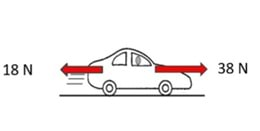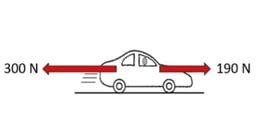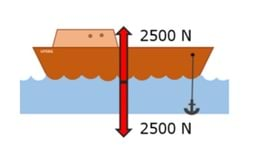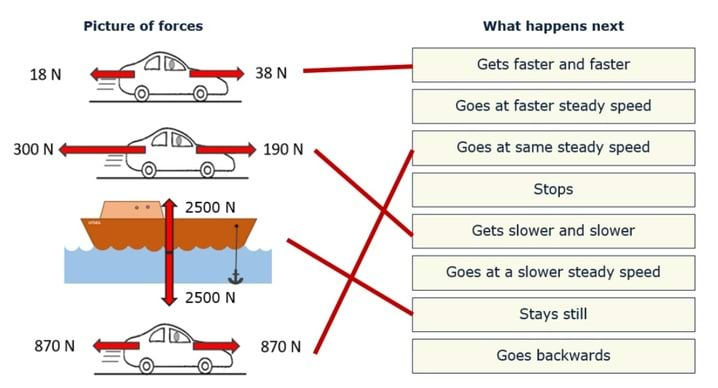Learning focus: | The resultant force is the sum of the forces acting on the object, taking into account their direction. If there is no resultant force, the forces are balanced. Unbalanced forces change the speed, direction and/or shape of an object. |
Observable learning outcome: | Describe what happens when two unbalanced forces act an object, both acting along the same straight line. |
Question type: | Diagnostic, linking ideas |
Key words: | Resultant force, Newton |
Driver et al (1994) identify several common misunderstandings that are addressed by this question:
- if there is motion, there is a force acting
- if there is no motion, then there is no force acting
- there cannot be a force without motion
- if there is not force, there is no motion
- when moving the force is in the direction of the motion
- constant speed results from a constant force
The first of these is very widely held because in everyday experience, when cycling or driving for example, we do need to apply a constant force in order to move at a steady speed in order to match friction and air resistance. This means that when an object is not moving it is wrongly perceived to have no force acting on it and the other misunderstandings can follow.
The purpose of this question is to calculate a resultant force and then to consider what is changed by it.
The key concept PFM1.1: What forces do considered what changes when a single force is acting. Describing the effect of a resultant force is a necessary prerequisite for both the key concept PFM1.4: Friction and the topic PFM2: Moving by force.
This task is intended for discussion in pairs or small groups. It is best done as a pencil and paper exercise.
Students should read the statements and follow the instructions on the worksheet. Listening in to the conversations of each group will often give you insights into how your students are thinking. Each member of a group should be able to report back to the class.
Feedback from each group can be used, with careful teacher questioning, to bring out a clear description or explanation of the science.
Differentiation
The quality of the discussions can be improved with a careful selection of groups; or by allocating specific roles to students in the each group. For example, you may choose to select a student with strong prior knowledge as the scribe, and forbid them from contributing any of their own answers. They may question the others and only write down what they have been told. This strategy encourages contributions from more members of each group.
NB in any class, small group discussions typically improve over time and a persistence with this strategy is often very successful in the medium to long term.
The most common wrong answer to the top pair of forces is ‘goes at a faster steady speed’. Careful questioning should bring out the idea that the force will increase the speed of the car, and as it speeds up the air resistance/drag will increase (students experience this on their bikes) until the resultant force is reduced to zero. So the car goes faster and faster with these forces, until it reaches a faster steady speed some time later. This is a difficult idea for most students to explain, but most can follow the logical steps when guided through, and it is a useful introduction to ideas covered in the topic PFM1.2 Moving by force.
With the second pair of forces, common responses are that the car stops or goes backwards. Asking students to consider a similar situation in their experience is an effective way at helping them to understand why the car slows down. For example when cycling and freewheeling up a hill, (after cycling very fast down the last hill) the extra backwards force slows them down, they do not come to an immediate stop or shoot backwards.
The last two pairs of forces show balanced forces. Most students are likely to correctly determine what happens to the boat because the common misunderstanding is that balanced forces result in no force at all. It is included with the last example to emphasise the idea that when forces are balanced, there is not force left over to make things change.
With the final example, it is common for students to think that the car will stop. If this is the case, then asking them to identify the force that makes it stop is often helpful in prompting a scientifically accurate response.
Following a discussion of the answers, a suitable response activity could be for students to be given the opportunity to explain the scientific way of thinking in their own terms. Or it could give students the opportunity to apply the scientific thinking to a new situation. In either case successful responses usually necessitate paired or small group activities and discussions, which encourage social construction of new ideas through dialogue.
BEST physics topic PFM2: Moving by force further develops students’ understanding of how balanced and unbalanced forces affect the motion of objects.




